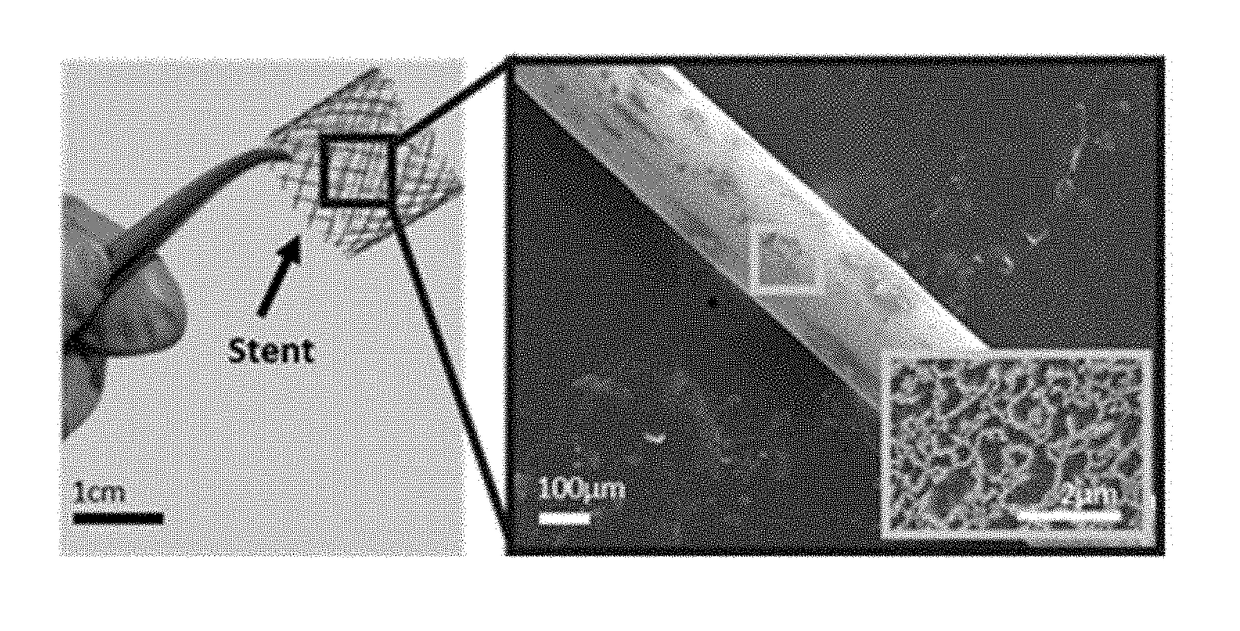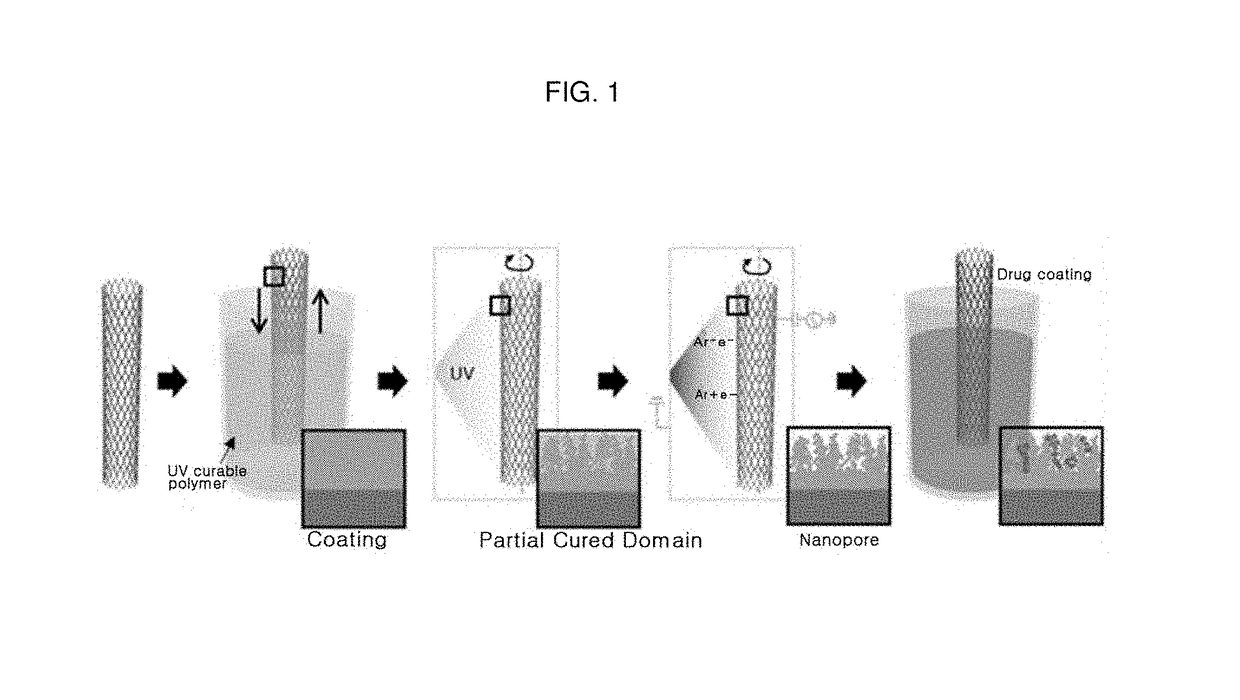Multifunctional bioimplantable structure and method of preparing the same
- Summary
- Abstract
- Description
- Claims
- Application Information
AI Technical Summary
Benefits of technology
Problems solved by technology
Method used
Image
Examples
example 2
[0085]The experiment was conducted again using the same producing method as the producing method as described in the above-mentioned first example. However, in this example, an UV exposure time is different from an reactive ion etching (RIE) time. When the RIE time is constantly controlled, the SEM image of the formed stent is shown in FIG. 5(a). When the UV exposure time is constantly controlled, the SEM image of the formed stent is shown in FIG. 5(b).
[0086]As shown in FIG. 5(a) and FIG. 5(b), it was confirmed that the thickness and depth of the nanostructure or pores may be easily controlled.
example 3
[0087]In order to confirm the wettability of the structure, additional experiments were conducted while controlling the plasma time. The result graph is shown in FIG. 6. As shown in FIG. 6, it was confirmed that as the depth of the polymer layer becomes deeper, the surface of the structure is more hydrophilic.
[0088]It is also known that the greater the wettability of the structure on the cells, the better the adhesion of the structure to the cell. As shown in FIG. 6, the contact angle (CA) of the glass was similar to the CA of a surface of the structure as has been RIE-treated at 21° C. for about 300 seconds. However, in spite of the similar CAs, the cell adhesion differs between the glass and the present structure. From this, it is possibly confirmed that the cell adhesion control factor is not only the wettability but also the cell adhesion is controlled by the polymer layer itself.
example 4
[0089]For loading the drug, the stent produced in the Example 1 was immersed in the drug containing solution, to load the drug into the pores formed in the polymer layer. In this connection, the drug was Doxorubicin. The SEM images of the stent with nano-sized pores, the drug-loaded stent, and the drug-releasing stent are shown in FIG. 7.
[0090]As shown in FIG. 7, the drug in a form of nanoparticles dispersed in water was loaded and diffused without a further surface treatment.
PUM
| Property | Measurement | Unit |
|---|---|---|
| Temperature | aaaaa | aaaaa |
| Structure | aaaaa | aaaaa |
| Biocompatibility | aaaaa | aaaaa |
Abstract
Description
Claims
Application Information
 Login to View More
Login to View More - R&D
- Intellectual Property
- Life Sciences
- Materials
- Tech Scout
- Unparalleled Data Quality
- Higher Quality Content
- 60% Fewer Hallucinations
Browse by: Latest US Patents, China's latest patents, Technical Efficacy Thesaurus, Application Domain, Technology Topic, Popular Technical Reports.
© 2025 PatSnap. All rights reserved.Legal|Privacy policy|Modern Slavery Act Transparency Statement|Sitemap|About US| Contact US: help@patsnap.com



